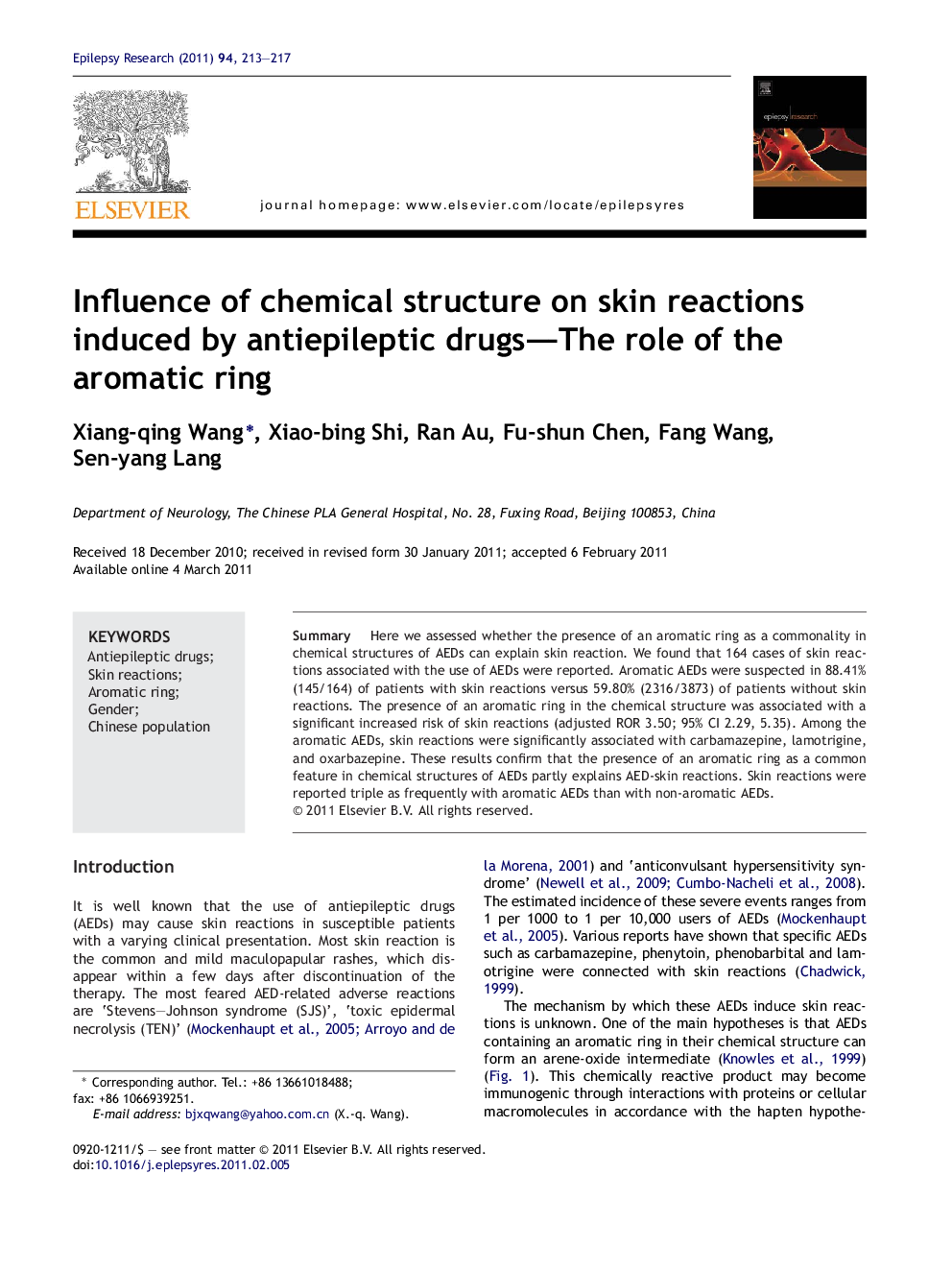| Article ID | Journal | Published Year | Pages | File Type |
|---|---|---|---|---|
| 3052468 | Epilepsy Research | 2011 | 5 Pages |
SummaryHere we assessed whether the presence of an aromatic ring as a commonality in chemical structures of AEDs can explain skin reaction. We found that 164 cases of skin reactions associated with the use of AEDs were reported. Aromatic AEDs were suspected in 88.41% (145/164) of patients with skin reactions versus 59.80% (2316/3873) of patients without skin reactions. The presence of an aromatic ring in the chemical structure was associated with a significant increased risk of skin reactions (adjusted ROR 3.50; 95% CI 2.29, 5.35). Among the aromatic AEDs, skin reactions were significantly associated with carbamazepine, lamotrigine, and oxarbazepine. These results confirm that the presence of an aromatic ring as a common feature in chemical structures of AEDs partly explains AED-skin reactions. Skin reactions were reported triple as frequently with aromatic AEDs than with non-aromatic AEDs.
